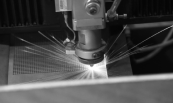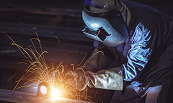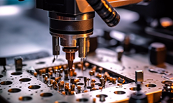0.4 Fiber vs CO₂ vs Plasma Cutting: Which One is Right for You?
Businesses frequently have to make the crucial choice of whether to use a fibre laser, CO₂ laser, or plasma cutting machine when cutting sheet metal and other industrial materials. Choosing the best cutting-edge technology can have a big impact on your output, quality, and profitability because each one has its own advantages, drawbacks, and uses.
We explain the distinctions between fibre laser cutting, CO₂ laser cutting, and plasma cutting in this article so you can choose the best option for your company's requirements.
- Technology Basics
- Fiber Laser Cutting
- Uses a solid-state laser generated through fiber optic cables.
- Emits a beam at 1.06 µm, ideal for metals.
- Beam is focused to a tiny spot, enabling high energy density.
- CO₂ Laser Cutting
- Utilizes a gas laser (carbon dioxide) with mirrors and lenses.
- Operates at 10.6 µm wavelength.
- Well-suited for non-metallic materials.
- Plasma Cutting
- Uses an electrically conductive gas (plasma) to transfer energy to the workpiece.
- Typically used for conductive metals.
- Must have compressed air or gases and a plasma torch.
- Fiber Laser Cutting
- Material Compatibility
- Cutting Speed & Thickness
- Fiber Laser:Fastest cutting speed for thin to medium-thick metals. Great for high-precision sheet metal cutting.
- CO₂ Laser:: Slightly slower, especially on metals. Performs well on thicker non-metals.
- Plasma: Excellent for thick steel cutting (up to 50 mm), but slower on thin sheets with lower accuracy.
- Cut Quality & Precision
- Fiber Laser:Delivers the highest edge quality and detail. Minimal kerf, low HAZ (Heat-Affected Zone). high-precision sheet metal cutting.
- CO₂ Laser:: Smooth finishes on non-metals, good on metals but not as precise as fiber.
- Plasma: Rougher edges, more dross, larger kerf. Best for applications where precision is not critical.
- Operating Cost & Maintenance
- Automation & Smart Integration
- Fiber lasers integrate easily with CNC systems, MES software, robotic arms, and IoT dashboards.
- CO₂ Lasers can be automated but are less common in modern smart factories.
- Plasma cutters offer CNC control but lack finer automation and monitoring tools.
- Investment & ROI
| Material | Fiber Laser | CO₂ Laser | Plasma Cutting |
|---|---|---|---|
| Mild Steel | Excellent | Good | Excellent |
| Stainless Steel | Excellent | Good | Good |
| Aluminum | Excellent | Fair | Good |
| Copper/Brass | Reflective Risk | Not Recommended | Reflective Risk |
| Acrylic, Wood, Plastics | Not Ideal | Excellent | Not Suitable |
Verdict: Choose Fiber for metals, CO₂ for non-metals, and Plasma for thick metal sheets at lower cost.
Laser Technologies’ GH Series Fiber Laser delivers up to 200 m/min movement speed with clean cuts and minimal dross.
| Factor | Fiber Laser | CO₂ Laser | Plasma Cutting |
|---|---|---|---|
| Energy Efficiency | Very High | Low | Moderate |
| Maintenance | Low (No mirrors) | High (Mirrors, Tubes) | Moderate |
| Consumables | Nozzle, Lens | Mirrors, Gas Tubes | Electrodes, Tips |
| Lifespan | 100,000 hrs+ | 10,000–20,000 hrs | 5,000–10,000 hrs |
The GH Series supports Industry 4.0 readiness, making it ideal for smart laser workshops.
| Machine Type | Initial Cost | Long-Term ROI | Ideal For |
|---|---|---|---|
| Fiber Laser | 💰💰💰 | ✅ Highest | Precision fabrication, mass production |
| CO₂ Laser | 💰💰 | ⚠️ Medium | Signage, acrylic, mixed materials |
| Plasma Cutter | 💰 | ✅ Quick Payback | Heavy-duty cutting, job shops |
What Should You Choose?
- Go for Fiber Laser if you want high-precision, energy-efficient metal cutting with automation options.>
- Choose CO₂ Laser if your focus is engraving or cutting non-metals like wood, acrylic, or textiles.
- Opt for Plasma if you need a budget-friendly solution for cutting thick steel and accuracy is less critical.






